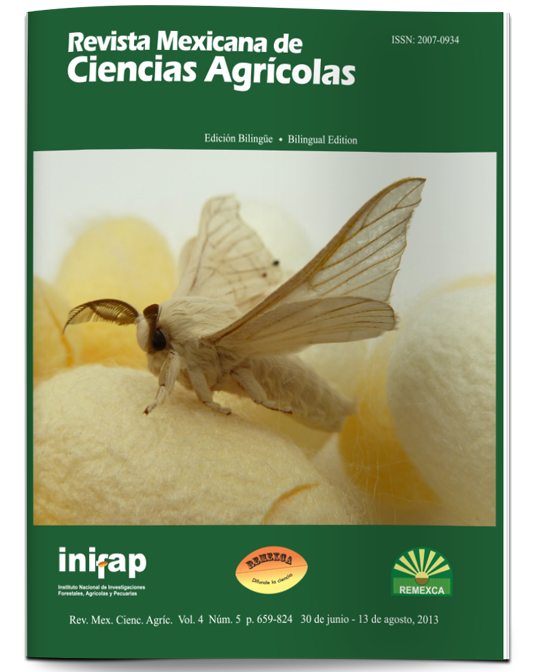Acceptability of fresh cut leaf lettuce treated with ascorbic acid applied by hydrocooling
DOI:
https://doi.org/10.29312/remexca.v4i5.1174Keywords:
cooling, sensory evaluation, vegetables, vitamin CAbstract
We assessed the effect of ascorbic acid, applied by two hydrocooling methods, on the overall acceptability, taste and appearance of cut green leaf lettuce, and the relationship between the taste and appearance of processed leaf lettuce regarding the overall acceptability of this product. Leaf lettuce was hydrocooled with a solution of 1% ascorbic acid by immersion and spraying, or by immersion in water. Non-hydrocooled lettuce was used as control. The treatment solutions were applied at 5 °C for 2 min, and the lettuce was then packed in polyethylene bags, impervious to moisture, stored at 5 °C for 14 days, and evaluated after 1, 7 and 14 days of storage. The overall acceptability of processed leaf lettuce (cut and packed) was highly correlated with its taste (R2= 0.85), but not with its appearance (R2= 0.39). All treatments maintained the overall acceptability values and taste of the lettuce during the 14 days of storage (p> 0.05). However, the lettuce that was hydrocooled by spraying with ascorbic acid, and the non-hydrocooled lettuce (control) were the only treatments that maintained appearance during the study. Further experimentation with the application of ascorbic acid by hydrocooling is required to ensure its usefulness for maintaining the sensory quality of processed leaf lettuce during storage.
Downloads
Downloads
Published
How to Cite
Issue
Section
License
The authors who publish in Revista Mexicana de Ciencias Agrícolas accept the following conditions:
In accordance with copyright laws, Revista Mexicana de Ciencias Agrícolas recognizes and respects the authors’ moral right and ownership of property rights which will be transferred to the journal for dissemination in open access. Invariably, all the authors have to sign a letter of transfer of property rights and of originality of the article to Instituto Nacional de Investigaciones Forestales, Agrícolas y Pecuarias (INIFAP) [National Institute of Forestry, Agricultural and Livestock Research]. The author(s) must pay a fee for the reception of articles before proceeding to editorial review.
All the texts published by Revista Mexicana de Ciencias Agrícolas —with no exception— are distributed under a Creative Commons License Attribution-NonCommercial 4.0 International (CC BY-NC 4.0), which allows third parties to use the publication as long as the work’s authorship and its first publication in this journal are mentioned.
The author(s) can enter into independent and additional contractual agreements for the nonexclusive distribution of the version of the article published in Revista Mexicana de Ciencias Agrícolas (for example include it into an institutional repository or publish it in a book) as long as it is clearly and explicitly indicated that the work was published for the first time in Revista Mexicana de Ciencias Agrícolas.
For all the above, the authors shall send the Letter-transfer of Property Rights for the first publication duly filled in and signed by the author(s). This form must be sent as a PDF file to: revista_atm@yahoo.com.mx; cienciasagricola@inifap.gob.mx; remexca2017@gmail.
This work is licensed under a Creative Commons Attribution-Noncommercial 4.0 International license.



